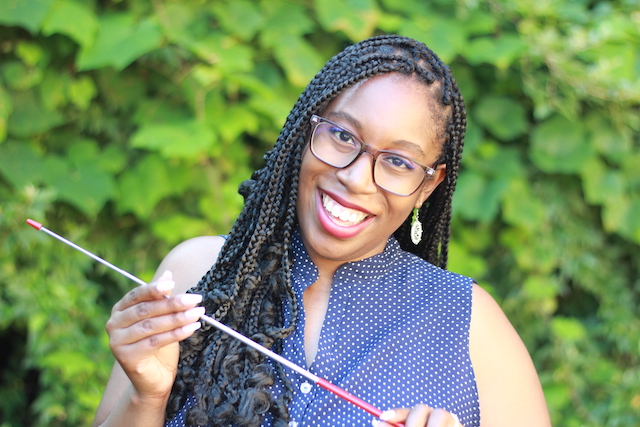"Where you look
affects how you feel"

What is Brainspotting?
Have you ever felt stuck, frozen, confused, on edge, ready to run, escape, avoid? If so, Brainspotting is a form of therapy or a treatment technique that connects your brain to your body. It helps you to process past traumas, by decreasing the symptoms, that have previously caused you to become triggered or have an undesired response. Brainspotting is often referred to as a Brain-Body Based Therapy.
What are the parts of the brain?
We have something called a triune brain, which consists of:
Front Brain= our thinking brain
Middle Brain= our emotional brain
Back Brain= connected to our bodies
How does my brain and body connect?
Brainspotting works with the deep brain (back brain) and the body through its direct access to the autonomic and limbic systems within the body's central nervous system. Brainspotting does this by utilizing your field of vision, such as specific eye positions or locations, which correspond with the location of your traumatic experience(s) and energies that may be stored in your brain and body.
What does this mean?
Our thinking brain usually needs some time to catch up to our brainstem. We have reflexes. For example, think about when you accidentally touch something hot, your body reacts first, then your brain realizes that it was a hot surface moments later. Another example is you scream because you thought you saw a threatening person, but moments later, you realize that it was just a friend or family member coming to say hey to you. When the brain scans itself to reveal where it's holding traumas, these reflexive cues are what tell the brain and us that it's found something important.
Trauma shows up in many ways and words can't always describe them. This is where Brainspotting comes in. As you go through life, traumas tend to pile up one on top of the other, creating a pretty chaotic filing system. Brainspotting connects your conscious attention to those buried, unlabeled emotions and memories, allowing your brain to process the information and self-heal.
History of Brainspotting
Brainspotting was developed by Dr. David Grand, PhD while working with survivors of the events of 9/11. As he worked with these survivors, he began to notice that when they would retell their traumatic experiences, they would always look at a certain spot. After this occurred in many sessions, Dr. Grand began to notice a pattern, which included where these survivors were looking, affected how they felt both physically and emotionally.
Who is Brainspotting good for and
who do we treat here?
Brainspotting is good if you:
Wrestle with seemingly big emotions (anxiety, anger, guilt, shame)
Shut down emotionally or check out (numbness)
React to various situations with Flight, Flight, or Freeze (trauma/ptsd)
Feel confused, scared, and ashamed about how you react in these situations
The good news is that your body already knows how to heal itself. It just needs a boost to restart that process.
Brainspotting can additionally treat ADHD, Chronic Fatigue and Chronic Pain, Impulse Control, Phobias, Sports Performance Issues, Substance Abuse, and more.

Tools/Aides used in Brainspotting
Brainspotting is most powerful and effective when done with the enhancement of BioLateral Sound CDs. Biolateral sound enhances the brain's processing abilities by alternately stimulating each cerebral hemisphere. For highly dissociated or very fragile clients, Brainspotting can be initiated without any bilateral intensification, which can be added later as the client is more integrated and flexible. The healing sound directly enters the brain through the auditory nerves while the eardrums are vibrated bilaterally.- brainspotting.com
Further Reading/Examples
As everyday people, we don’t usually recognize this, unless we typically practice being attuned to our bodies. Also, this way of processing happens at an unconscious level. Unconscious, meaning that we are unaware that it’s taking place. A slight, unrelated comparison would be to think about when you blink, do you notice that it’s happening every single time? You may have started to notice your blinks now, because you’re reading this and are more aware of it, but let’s say 10 seconds ago, you weren’t paying attention, right? Something similar happens with our field of vision (where we look). When we recall something, we often unconsciously look to a specific location or even sometimes various locations to recall what happened.
Let’s try a few more examples to help you gain some insight into Brainspotting. On a daily basis, we’re always absorbing, taking in, and processing information. This happens from the moment we wake up, until the moment we go to sleep. Take a minute to think about what information you would recall if you saw the sun outside on a summer day. Perhaps, your brain might tell you that sun=warm temperature. Next up, think about a dark and gloomy day. Your brain might tell you that cloud=potential rain and potential rain=you might want to wear a raincoat or bring an umbrella. Your brain provides you with this information because it has previously stored past events of what both the sun and rain feel like and your experience with each of those. I want you to think of your brain like a computer. The brain will process the information it receives, label it, and store it in your brain as a properly labeled memory. This organizing process allows you to cope with the event and file it where it belongs.
Let’s try this and take it one step further. I want you to think about how you might physically react if you noticed that the sun was out. Do you feel a sense of relief, like you don’t have to bring extra stuff with you or worry about protecting important papers or devices, the way you might from other weather? If that’s somewhere close to what you were thinking, your body is also a part of this response and this stored information. I don’t want to go too in depth into this explanation and lose you. I’m trying to keep it as simple as I can.
Key points are that our brains AND our bodies store information and Brainspotting can help identify the stored information and process them, if you’re feeling stuck, scared, confused, etc. How? When you experience a traumatic event, your brain receives a tremendous amount of information at a super fast rate, where you take in frightening or disturbing information. When this is happening, your brain can’t always process, label, and store all that information efficiently, like the sun example above, so it puts it in random places in your brain and usually buries it. You might quickly forget or not even realize that the memories are in there.
An example of this is if you’ve experienced a traumatic event and people ask you how you are doing immediately after, the next day, or a week later, you might respond with “I’m alright”. You may or may not know that the event happened and you may not be able to associate the fear, sadness, etc with that memory in the moment. The previous response may be because you honestly believe you’re alright, but also the traumatic event that you experienced has gone to a place in your brain where you can’t easily access. However, don’t mistake not being easily accessible, to not being present at all.
When something happens, we often try to self store it for later, like “I don’t have time for these emotions, I’ll deal with them later”. But does later ever come and if it does, what do you do with those emotions? How do you organize them? When we never tend to those emotions or don’t know what to do with them, they keep showing up and start to get bigger and bigger each time. They start to say “HEY, I’M HERE, DON’T YOU FORGET ABOUT ME!” But you may continue to say you’ll get to them later, but you never do. Those emotions, as previously stated, may start to show up in unrecognizable ways, such as yelling at people, having a short temper, crying uncontrollably, fearing many things, anxiety through the roof, etc. This is where Brainspotting comes in, where it helps to organize and refile those events that took place, so that your emotional reactivity can lessen.
